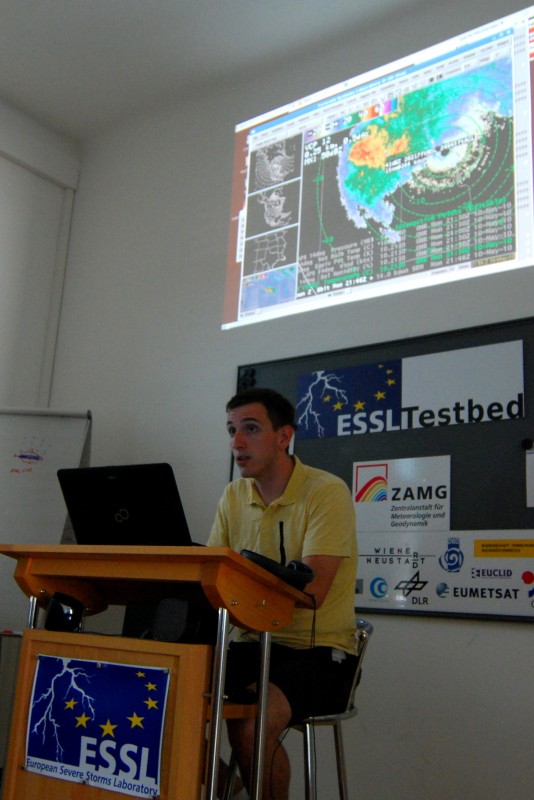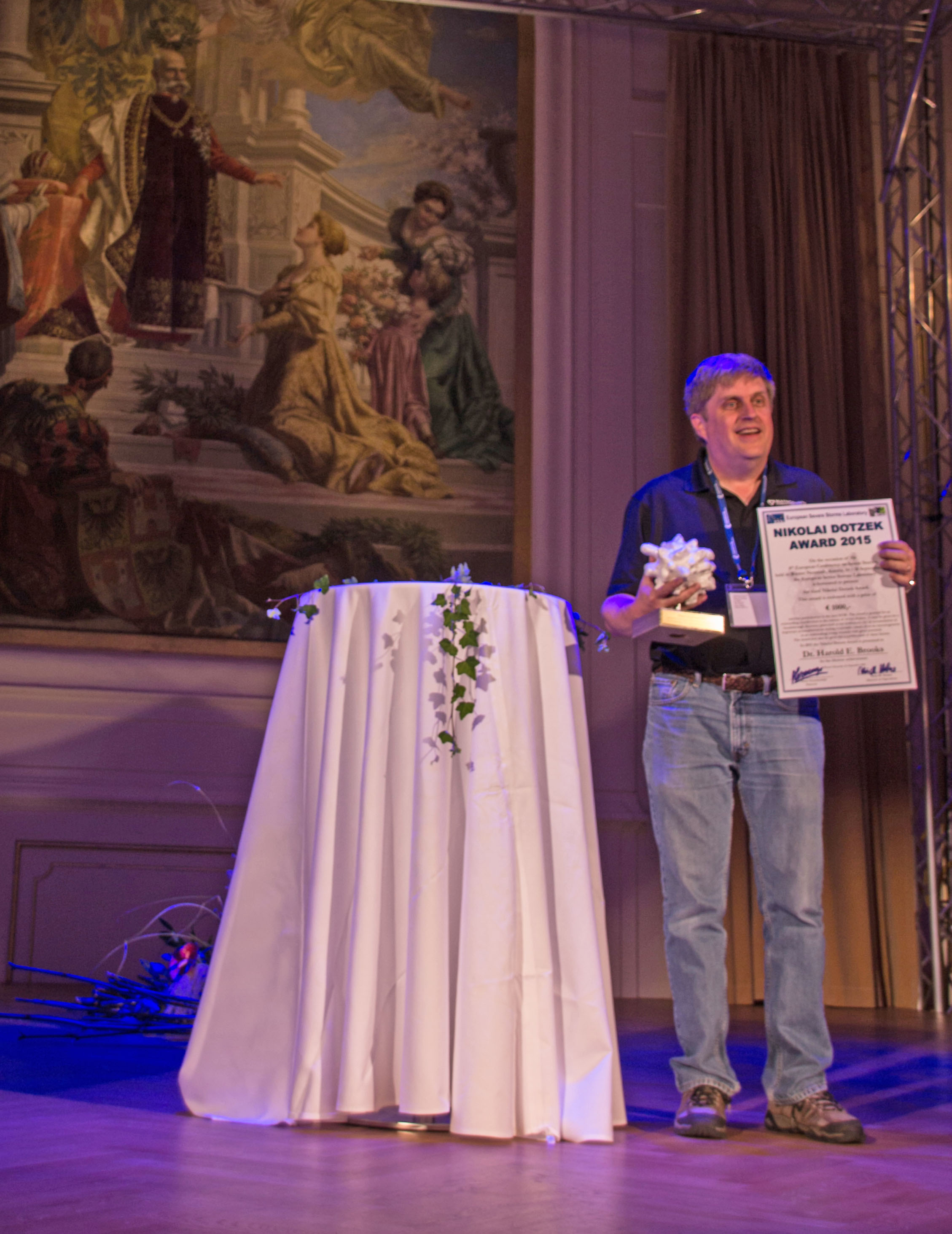 Darrel Kingfield (CIMMS/NSSL) spent two weeks serving as a forecaster and instructor at the European Severe Storms Laboratory (ESSL) 2014 Testbed in Wiener Neustadt, Austria. In its third year, the goals of the ESSL Testbed program include the evaluation of techniques and algorithms to forecast convective high-impact weather. The testbed serves as a forum to stimulate interaction between product developers and operational forecasters from throughout Europe. Also, the testbed aims to enhance participants’ skills in forecasting high-impact weather through providing expert lectures from several local and international experts on a variety of meteorological topics.
Darrel Kingfield (CIMMS/NSSL) spent two weeks serving as a forecaster and instructor at the European Severe Storms Laboratory (ESSL) 2014 Testbed in Wiener Neustadt, Austria. In its third year, the goals of the ESSL Testbed program include the evaluation of techniques and algorithms to forecast convective high-impact weather. The testbed serves as a forum to stimulate interaction between product developers and operational forecasters from throughout Europe. Also, the testbed aims to enhance participants’ skills in forecasting high-impact weather through providing expert lectures from several local and international experts on a variety of meteorological topics.
Each day in the testbed consists of a sequence of verification activities, day 1-2 forecasts, forecast briefings, forecaster training, and issuing convective nowcasting products and/or day 3-5 forecasts. Products evaluated this year include:
-
Algorithms developed by the German Weather Service Deutscher Wetterdienst (DWD) for identifying and tracking mesocyclones, vertically integrated liquid, and regions of high azimuthal shear,
-
The integration of cloud-to-ground (CG) strikes and densities from the Vaisala Global Lighting Detection 360 network,
-
A system developed by the DWD providing automated warning decision guidance called NowCastMIX,
-
Short-range forecasts from the COSMO-DE model developed by the DWD, a high-resolution convection-permitting ensemble model,
-
An algorithm developed by SSAI-NASA that identifies overshooting thunderstorm tops.
In addition to participating in the forecasting and evaluation process, Darrel provided both seminars and hands-on demonstrations on storm and hazard identification using polarimetric radar, decision assistance tools used by National Weather Service forecast offices, and current/future NSSL research-to-operations initiatives including the Multi-Radar/Multi-Sensor (MR/MS) system, Forecasting a Continuum of Environmental Threats (FACETS), and Probabilistic Hazard Information (PHI).


